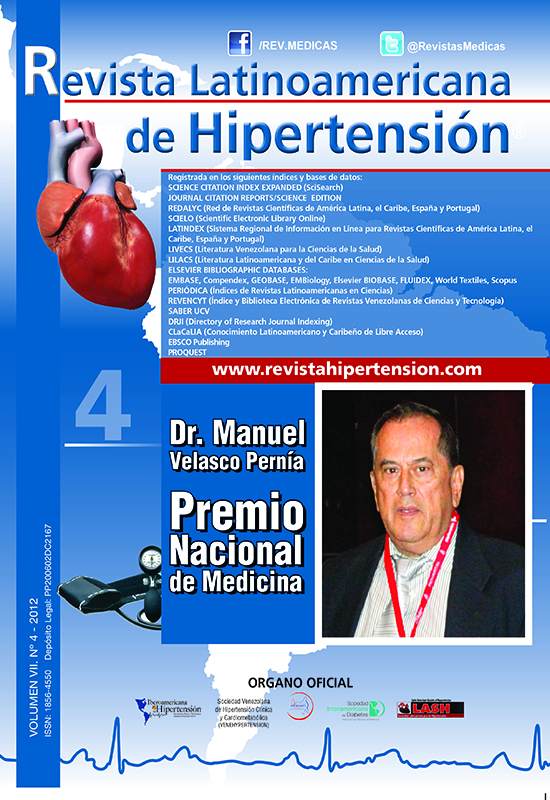Biologic Behavior and optimal cut-off point estimation for Serum Fasting Insulin: A report from the Maracaibo City Metabolic Syndrome Prevalence Study
Palabras clave:
Insulin, Hyperinsulinemia, Insulin Resistance, Metabolic Syndrome, Cut-Off point.Resumen
Introduction: Insulin resistance is a metabolic state in which tissue effects of insulin are diminished, leading to hyperinsulinemia as a compensatory mechanism. The combination of insulin resistance and hyperinsulinemia constitutes one of the main pathophysiological landmarks of Metabolic Syndrome. Thus, our main objective was to determine a cut-off point for serum fasting insulin in the population of Maracaibo. Materials and Methods: Descriptive, cross-sectional study realized in 2,026 subjects of both genders, 18 years of age or older, who had their serum fasting insulin quantified. These values underwent logarithmic transformation for normalization of their distribution, which was corroborated through Geary’s test. Results were expressed as means ± SD. A cut-off was selected through the construction of ROC Curves using selected healthy and “sick” populations. Results: In the studied population (n=2,026) the mean serum fasting insulin concentration was 14.6±9.5 μU/mL. When stratifying by gender, a mean of 14.5±9.3 μU/ mL was observed in women and 14.8±9.8μU/mL in men; p=0.715. When assessing these levels by age groups, BMI and waist circumference, a progressive increase was observed along each category. The selected cut-off point for serum fasting insulin concentration was 13μU/mL; AUC=0.792; Sen=74.4%; Esp=71.3%. Conclusions: Serum fasting insulin concentrations increase with age, BMI and waist circumference. A cut-off point of 13μU/mL is suggested for the definition of fasting hyperinsulinemia in our population.Descargas
Los datos de descargas todavía no están disponibles.

